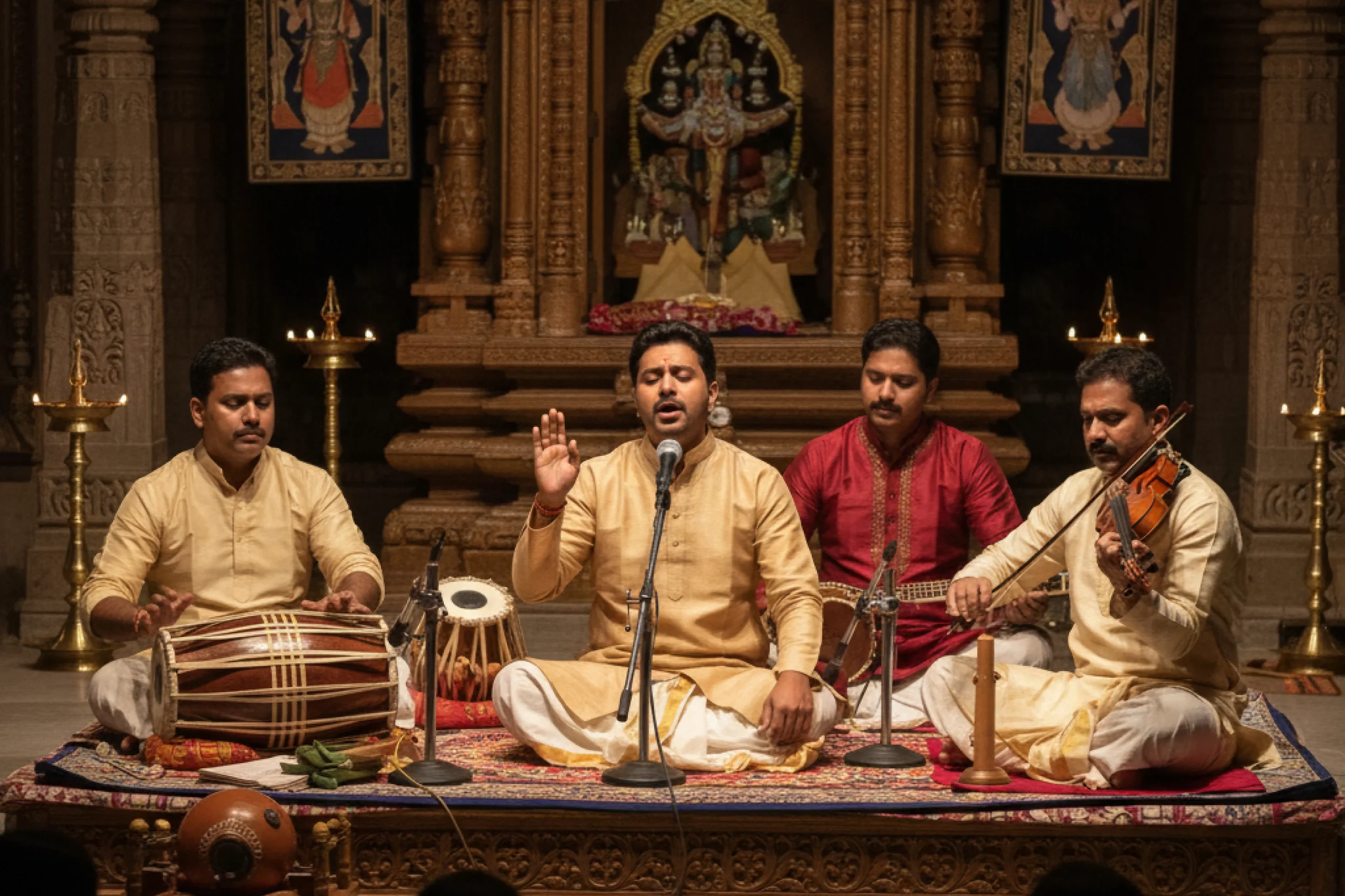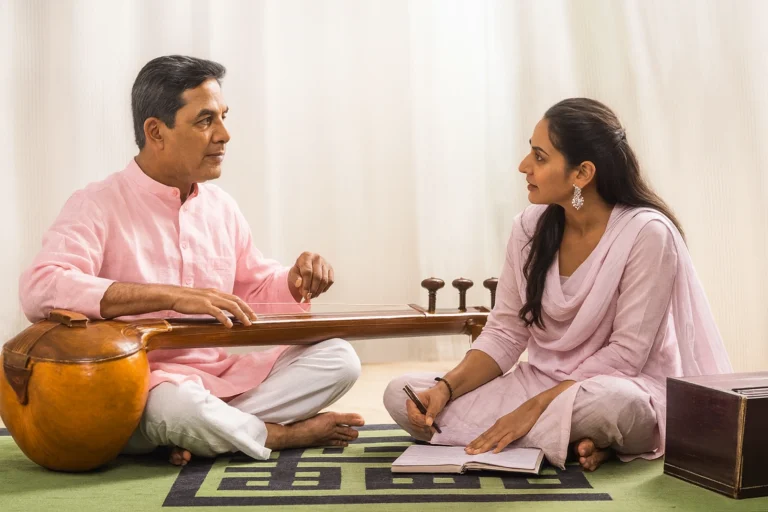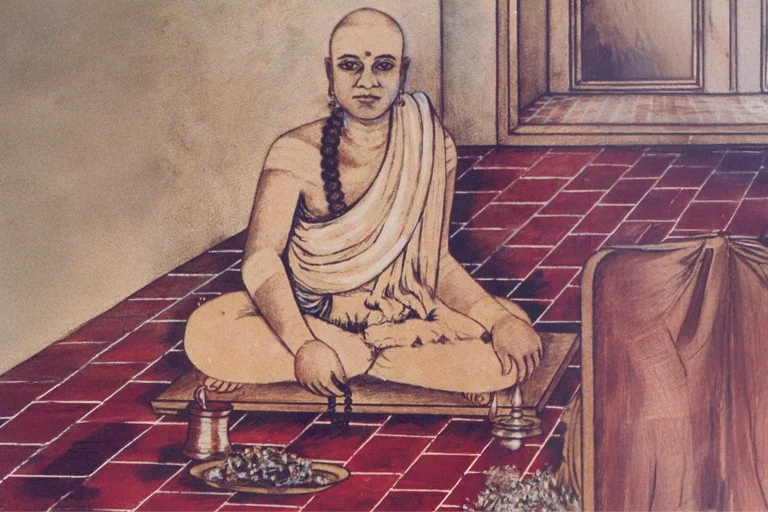All Topics
- Alchemizing Music Concepts for Students
- Artist Spotlight
- artium gift card
- Artium Maestros
- Artium News
- buying guide
- Carnatic Music
- Devotional Music
- Editorials by Ananth Vaidyanathan
- Film Music
- Guitar
- Hindustani Classical Music
- Indian Classical Music
- Indian Folk Music
- Insights
- Instruments
- Karaoke Singing
- Keyboard
- Kids Music
- maestros
- Music Education
- Music for Kids
- Music Industry
- Music Instruments
- Music Legends
- Music Theory
- Music Therapy
- Piano
- piano guide
- Tamil Film Music
- Telugu Film Music
- Time Theory
- Tools
- Uncategorized
- Vocal Singing
- Vocals
- western classical music
- western music
- Western vocal music
Understanding Janta Varisai In Carnatic Music
Understanding Janta Varisai In Carnatic Music

Table of Contents
Carnatic music, the classical music tradition of South India, is taught through a well-structured and time-tested method. Every learner begins with Sarali Varisai, the simple ascending and descending exercises that introduce the seven swaras (notes). Once the student becomes familiar with this foundation, they progress to the next level—Janta Varisai.
Janta Varisai may look like just a repetition of notes, but in reality, it is one of the most important milestones in a student’s journey. By repeating each swara twice, these exercises add weight, clarity, and discipline to the learner’s voice. They also instill confidence in hitting the right pitch without wavering, something every Carnatic vocalist or instrumentalist must master early on.
Think of Janta Varisai as the stage where students stop “singing notes mechanically” and start developing a sense of control, expression, and strength. Just as an athlete builds stamina with repeated drills, a Carnatic music learner strengthens their voice and musical sense with these double-note patterns. In this blog, we will explore Janta Varisai in depth—its meaning, practice methods, and why it remains such a powerful stepping stone in Carnatic music learning for both beginners and advanced musicians.
What is Janta Varisai in Carnatic Music?
The word “janta” in Sanskrit and Tamil means “double” or “pair.” In Janta Varisai exercises, each note (swaram) is sung twice in succession. For example, instead of simply singing the scale as:
Sa Ri Ga Ma Pa Dha Ni Sa
A Janta Varisai version would be sung as:
Sa Sa | Ri Ri | Ga Ga | Ma Ma | Pa Pa | Dha Dha | Ni Ni | Sa Sa
This repetition gives weight and clarity to each note and trains the student to control their voice with firmness.
Understanding the Purpose of Janta Varisai
Janta Varisai is not just a repetition of swaras. It serves multiple pedagogical purposes in Carnatic training:
- Strengthens the Voice
Singing the same note twice ensures that the learner develops stability and control over vocal delivery.
- Introduces Spuritam
A form of ornamentation where the second note is sung with extra force, emphasizing the swara’s strength.
- Improves Pitch Accuracy
By dwelling on each note twice, students are trained to hit the correct pitch without sliding or wavering.
- Develops Breath Control
Since each exercise is sung continuously within the framework of a tala (rhythm cycle), breath management becomes crucial.
- Foundation for Gamakas
Many gamakas (ornamentations) rely on stressing or repeating notes. Janta Varisai lays the groundwork for handling them later.
Structure of Janta Varisai
Like Sarali Varisai, Janta Varisai is taught in the raga Mayamalavagowla, the 15th Melakarta raga, which is considered the mother scale for beginners. Its structure is:
- Arohana (Ascending): S R1 G3 M1 P D1 N3 S
- Avarohana (Descending): S N3 D1 P M1 G3 R1 S
Examples of Janta Varisai patterns include:
- Ascending: Sa Sa Ri Ri Ga Ga Ma Ma Pa Pa Dha Dha Ni Ni Sa Sa
- Descending: Sa Sa Ni Ni Dha Dha Pa Pa Ma Ma Ga Ga Ri Ri Sa Sa
Each of these exercises is sung in different speeds (kalams):
- 1st speed: one note per beat.
- 2nd speed: two notes per beat.
- 3rd speed: four notes per beat.
This gradual speed progression improves rhythmic stability and agility.
Relevance of Janta Varisai in Carnatic Music
1. Voice Training and Strength
Carnatic music demands clarity and power in note rendition. Janta Varisai helps students add weight to their voice. Teachers often emphasize that the second note in each pair should be delivered with firmness, giving the swara its majesty.
2. Preparing for Ornamentation (Spuritam)
The concept of spuritam—where a note is repeated with force—is first introduced here. For example:
When singing “Ri Ri,” the first “Ri” is plain, while the second “Ri” is forceful, almost as if pushed from the note below. This prepares students to handle more advanced gamakas in ragas like Thodi and Bhairavi.
3. Building Pitch Stability
By repeating notes, learners internalize the exact location of each swara in relation to the base shruti (drone). This minimizes mistakes like apaswara (off-pitch singing).
4. Enhancing Rhythm Sense
Janta Varisai is always practiced in tala cycles such as Adi Tala. Singing pairs of notes within this structure helps learners balance swara rendition with rhythmic precision.
5. Transition to Higher Lessons
After mastering Janta Varisai, students are better prepared to handle:
- Alankaras (rhythmic exercises in multiple talas)
- Geetams (simple compositions)
- Varnams (complex pieces combining melody, rhythm, and gamakas)
Examples of Janta Varisai Patterns
Here are a few common exercises sung in Mayamalavagowla:
- Straight Ascending-Descending:
Sa Sa Ri Ri Ga Ga Ma Ma Pa Pa Dha Dha Ni Ni Sa Sa
Sa Sa Ni Ni Dha Dha Pa Pa Ma Ma Ga Ga Ri Ri Sa Sa - Skipping Notes:
Sa Sa Ga Ga Ri Ri Ma Ma Ga Ga Pa Pa Ma Ma Dha Dha… - Reverse Combinations:
Sa Sa Ri Ri Sa Sa Ga Ga Ri Ri Ma Ma Ga Ga Pa Pa…
Each exercise can be practiced at different speeds and in various nadais (subdivisions of rhythm) like tisram (3), chatusram (4), and misram (7).
Importance of Practicing Janta Varisai Regularly
For beginners, Janta Varisai may seem repetitive, but regular practice unlocks deeper skills:
- Clarity of Notes: Ensures that each swara is distinct.
- Voice Endurance: Strengthens the ability to sustain long passages without strain.
- Rhythmic Discipline: Builds internal rhythm sense necessary for improvisation (manodharma).
- Emotional Expression: Even though exercises are technical, Janta Varisai trains the voice to carry depth and feeling when applied in kritis and ragas.
Janta Varisai in Relation to Other Varisais
Carnatic beginners progress through a sequence:
- Sarali Varisai – Teaches smooth scale singing.
- Janta Varisai – Adds weight and clarity through repetition.
- Daatu Varisai – Teaches skipping notes for flexibility.
- Alankaras – Combines swaras with different talas.
Among these, Janta Varisai is unique because it introduces the idea of voice culture and spuritam, both of which remain central in higher-level Carnatic music.
Teaching Approach for Janta Varisai
Teachers emphasize specific techniques when guiding students through Janta Varisai:
- Listen to Shruti: Always align with the tanpura or shruti box.
- Second Note Stronger: Ensure that the second of the pair is forceful but not harsh.
- Maintain Tala: Use hand gestures to keep rhythm while singing.
- Start Slow: Begin at first speed, move to higher speeds only after mastering clarity.
- Practice Daily: Regular repetition builds muscle memory for swara precision.
Examples of Janta Varisai
Imagine a student singing in Adi Tala (8 beats):
- First Speed: Sa Sa | Ri Ri | Ga Ga | Ma Ma | (1 swara pair per beat)
- Second Speed: Sa Sa Ri Ri | Ga Ga Ma Ma | (2 swara pairs per beat)
- Third Speed: Sa Sa Ri Ri Ga Ga Ma Ma | Pa Pa Dha Dha Ni Ni Sa Sa | (4 swara pairs per beat)
This methodical increase in speed and control mirrors the way professional singers handle rapid swara passages in kritis and kalpana swaras.
Why Janta Varisai Matters Beyond the Beginner Stage?
Even advanced musicians revisit Janta Varisai because:
- It is a voice warm-up exercise before concerts
- It keeps the foundation of swara clarity intact
- It is helpful for teaching students how to bring strength and bhava into every swara
The Lifelong Relevance of Janta Varisai
Janta Varisai may appear simple, but it is a cornerstone of Carnatic music training. By repeating each note twice with clarity, students develop pitch accuracy, strength, and rhythmic stability. It introduces the concept of spuritam, builds voice culture, and prepares learners for advanced lessons like varnams and kritis.
For carnatic music beginners, Janta Varisai is the gateway to disciplined practice. For advanced musicians, it remains a vital warm-up and refresher of fundamentals. In the vast ocean of Carnatic classical music, Janta Varisai serves as a reminder that mastery begins with strong basics.
At Artium Academy, anyone can join Online Carnatic Music Classes and learn Janta Varisais online through a structured and expert-backed Carnatic music curriculum. Designed for beginners as well as those revisiting their fundamentals, these lessons are taught step by step by highly trained faculty, ensuring clarity in swaras, rhythm, and voice culture. The seamless online music classes allow you to learn from the comfort of your home, no matter where you are in the world, with interactive sessions that replicate the experience of a traditional gurukul.
Backed by leading maestros, Artium’s Indian classical music course makes it easy for students to practice Janta Varisais with guidance, feedback, and personalized attention. With flexible schedules and a supportive platform, learners of all ages can confidently build their Carnatic foundation and progress steadily.
FAQs on Janta Varisai
Janta means double or pair. In Janta Varisai, each swara (note) is sung twice in succession, such as Sa Sa | Ri Ri | Ga Ga, to build clarity and strength in Carnatic music practice.
It strengthens the voice, improves pitch accuracy, develops rhythm sense, and introduces the concept of spuritam (forceful swara repetition), which is essential in advanced singing.
Traditionally, Janta Varisai is taught in Mayamalavagowla raga, the 15th Melakarta, because of its symmetric structure and suitability for beginners.
Students usually practice in three speeds:
- 1st speed: one swara per beat
- 2nd speed: two swaras per beat
- 3rd speed: four swaras per beat
While it is mainly introduced to beginners, even advanced musicians practice Janta Varisai as a warm-up exercise to maintain swara clarity and strengthen voice control.
By mastering Janta Varisai, students are better equipped to handle Alankaras, Geetams, Varnams, and Kriti singing, as they already have control over swara precision and strength.






